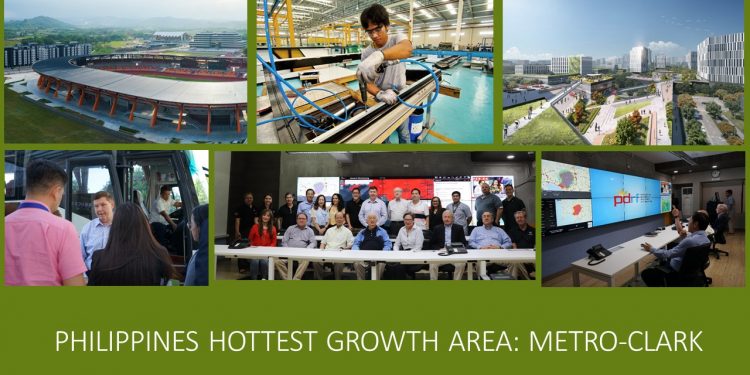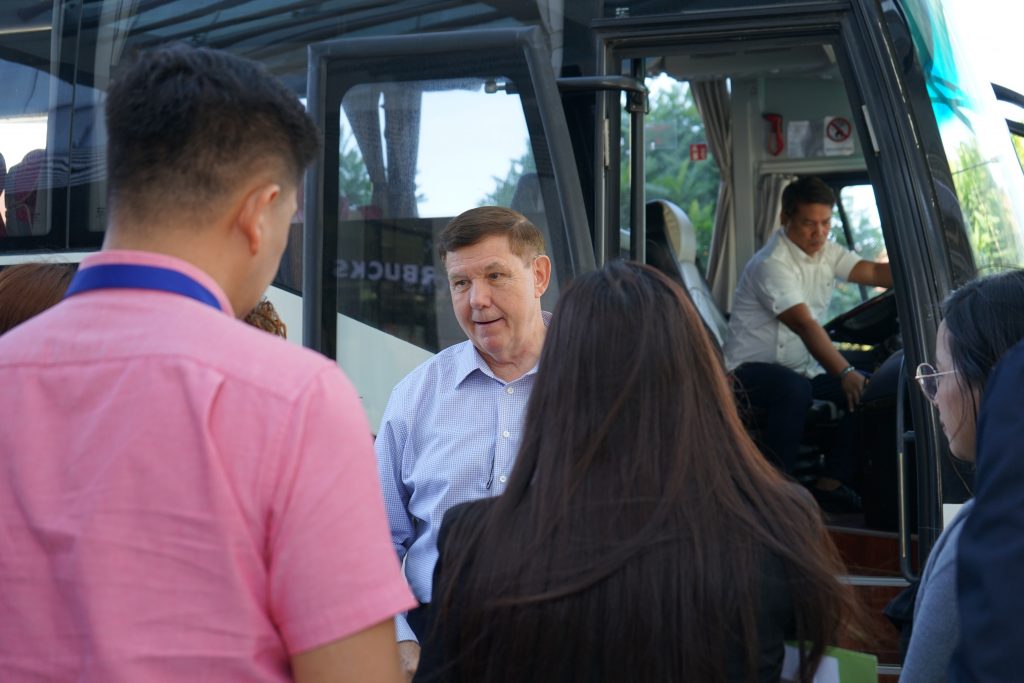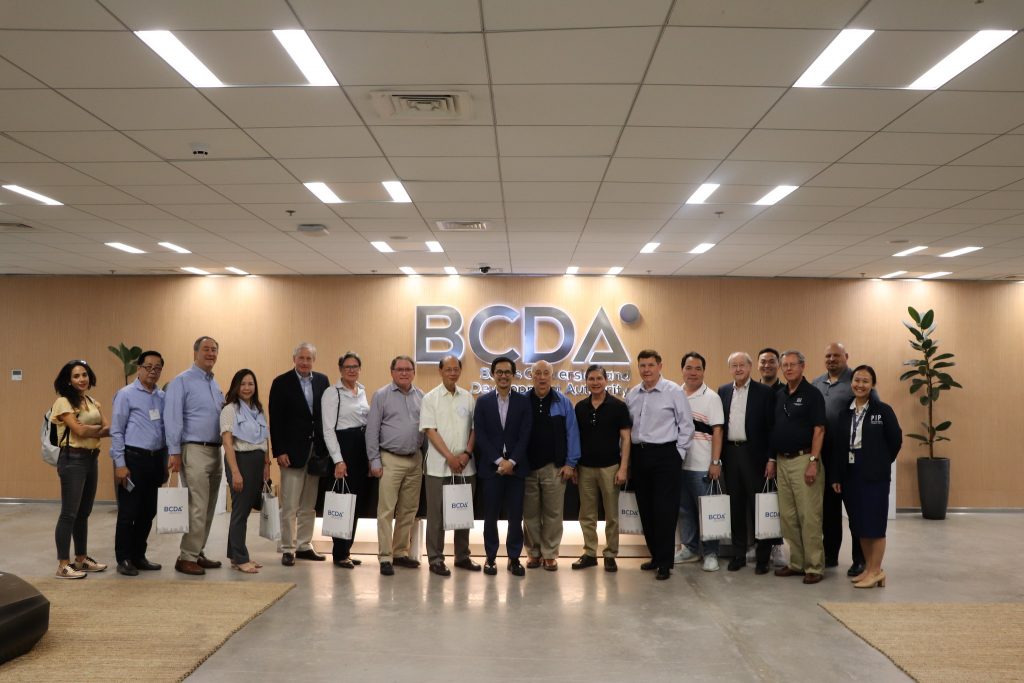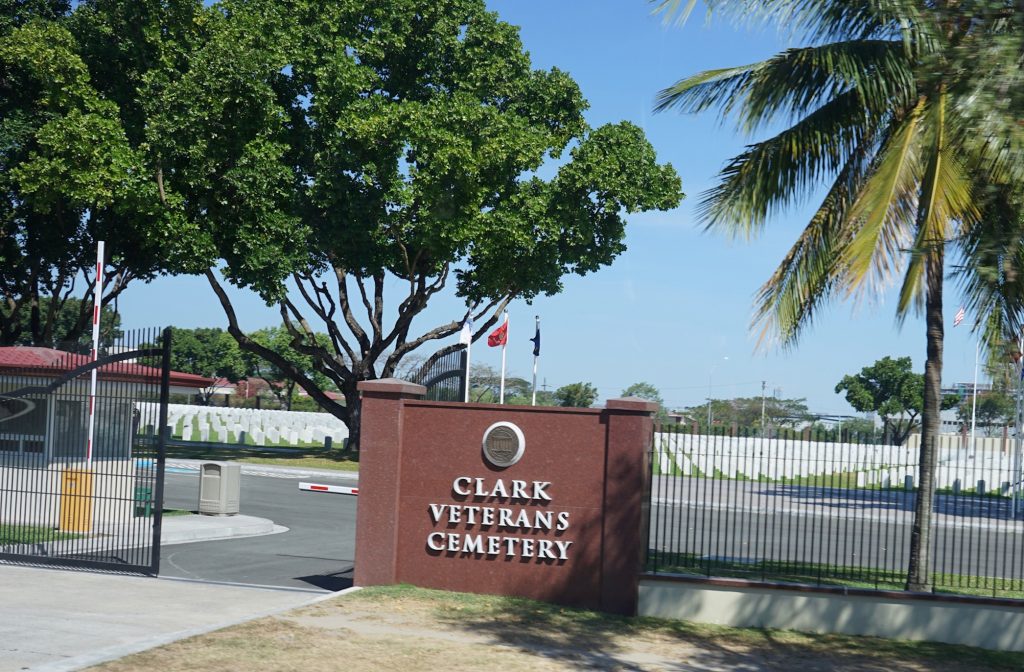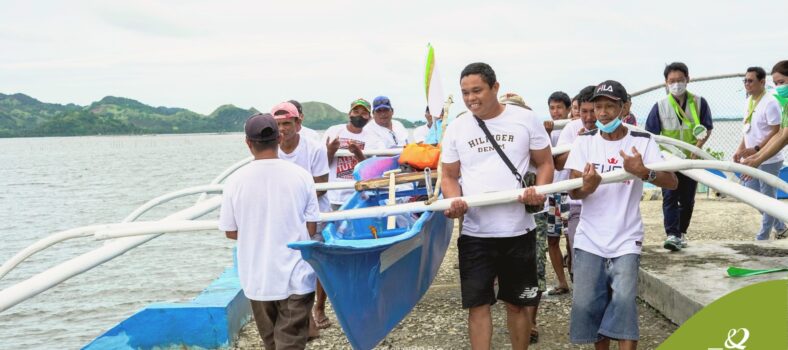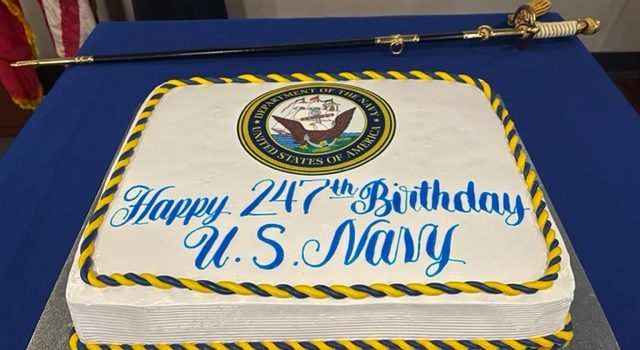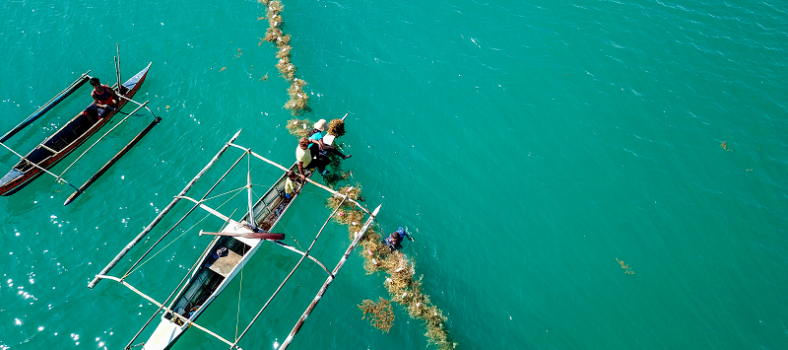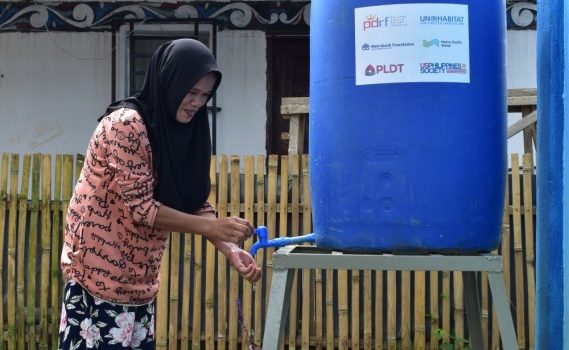Weekly Issues: Metro-Clark – The Philippines Hottest Growth Area
April 2020
Featured Contributor
Founder and former President and CEO of Peregrine Development International
Retired U.S. Navy Captain
Founding Director of the US-Philippines Society
Question 1: With Clark’s progress as a rising business location outside Metro Manila, how do you rate opportunities for participation by American companies?
In one word, “Excellent”. If one objectively looks at what constitutes a positive, attractive and conducive business environment, the Metro-Clark area would consistently be ranked the number one location, not only in the Philippines, but in all of Asia.
Question 2: That is a pretty strong endorsement, what would you base that on?
Location, location, location. First, Manila is heavily congested, facing the same gridlock challenges confronting other mega-cities throughout East Asia. From a business perspective, office rents can be astronomical and quality of life for many in the workforce is degraded because of lengthy commute times and higher costs of living. Hence, cost of operations and overheads are higher inside the Metro-Manila area. In contrast, the proximity of Metro-Clark to Manila gives it many of the benefits of being in Metro-Manila without the headaches. First, Clark is unrivaled with respect to other off-Luzon island locations where the ability to get to and from Manila is difficult because of the unreliability of inter-island transportation during typhoon season, not to mention the added cost of air connectivity whether attending a conference or having executives visit from America. One can always travel Clark-Manila 24/7 by virtue of land transport on a network of great expressways in less time than one can fly from say Davao, Cebu, Iloilo or any other off-Luzon island location. Rents in Metro-Clark area are about half those in Metro-Manila, with a higher quality of life, and much lower cost of living for the workforce. As importantly, is the proximity to the Philippines largest and best airport. The Clark International Airport, has the best infrastructure, and now with its new passenger terminal’s projected opening in September 2020, is the heir apparent to NAIA in much the same way as the Dulles airport in Washington DC became the heir to the older and smaller Washington National/Ronald Reagan airport.
Question 3: When you speak, you often refer to “Metro-Clark,” what do you mean by that?
In 1975, President Marcos issued Presidential Decree 824 creating “Metro-Manila” which embraced and unified 16 independent city areas into what many today think of when they say “Manila”. For the past few years, I have drawn the same parallel when speaking of Clark and the surrounding area such that Metro-Clark really embraces the surrounding communities of Angeles, Mabalacat, Puroc, Mexico, Magalang, San Fernando, Bamban and arguably even Capas, Tarlac with the emergence of New Clark City. Metro-Clark embraces two million residents, and if you include the Province of Pampanga, immediately surrounding Clark, it would include three million people; now if you expand that to all of Region III, within about a 45 mile radius, you are now talking a population of 12.5 million. By comparison, it is 40 miles from the northern sections of Caloocan to the southern end of Muntinlupa, two of the 16 unified city areas of Metro-Manila. However, because of congestion, it will take over two-hours driving time to transit. Metro-Clark is very analogous to Metro-Manila without the congestion, with better road networks, higher qualify of life and better urban master planning.
Question 4: Ok, so Metro-Clark is a major urban center, but why does that make it special or an economic hub?
Metro-Clark is anchored by the Philippines’ largest and best airport in the country, four times larger than Manila’s limited 640-hectare NAIA airport. The Manila airport also is located within the center of a densely populated and congested area that cannot be expanded or improved. The Clark international airport on the other hand, is the legacy left behind by the U.S. Air Force. The Clark Air Base was an American quality built facility with dual-use runways and an incredible modern supporting infrastructure. The Philippines has literally transformed this asset into a modern Freeport manufacturing hub, anchored by a first-class international airport and corresponding residential, commercial and industrial activities in what today has all the earmarks of a modern Aerotropolis. Within Metro-Clark, over $8 billion in exports were shipped in 2019 from giants including Texas Instruments, Samsung, Yokohama among so many others. Flagship carriers, including Emirates, Qatar, Asiana, Philippine Airlines, Air Asia and many others all now operate out of Clark – – so too does FedEx and UPS. Other airlines will continue to expand into Clark as the only viable alternative to Manila.
Question 5: You often make reference to the Metro-Clark Aerotroplos, why, and what do you mean by that?
Doctor John Karsarda first framed the term “Aerotropolis” in 2000 as an urban center whose infrastructure, land use and economy are centered on an airport. He also co-authored a book with Greg Lindsay, “Aerotropolis: The Way We’ll Live Next” where they discuss how modern international airports literally transform the way we live in the future. One merely has to look at history. Think of how JFK overcame and dominated New York’s original airport, La Guardia; or how Chicago’s O’Hare has done the same to Midway or in Paris, how Charles de Gaulle totally has dominated Orly. An even better example is the new Dallas-Fort Worth airport which now overshadows both Dallas and Fort Worth. Clark, in much the same way is the heir apparent to Manila’s old and under-performing NAIA. Today, proximity to air travel is critical as just-in-time inventories and timely movement of people are so important to success in a global marketplace. The term Aerotropolis goes beyond this; it embraces fully-integrated, modern urban centers, where people can live-work-play without sacrificing quality of life and by learning from the disasters of late 20th century densely populated urban centers and their distant suburbia living communities with long commutes into congested mega-cities. The Metro-Clark Aerotropolis represents the future of the country with its modern live-work-play model and proximity to a modern airport.
Question 6: What then is driving the economic growth?
First, one has to recognize that Metro-Manila with its 15 million people is too congested and in dire need of major infrastructure upgrades. For far too long, many in the political and social leadership and urban planners have thought of the Philippines as a “city-state” country where national life revolved Metro-Manila, much like Singapore, Hong Kong or Dubai. But the Philippines is so much more, and requires several mega-cities to support its 115 million people, the 12th most populous country in the world. The country needs many urban centers. Metro-Clark is an ideal alternative, with its proximity to Manila and its ready-made world class airport, a legacy of the U.S. Air Force. The Clark International Airport is unquestionably the biggest driver, just as articulated by Karsarda and Lindsay in their Aerotropolis book. Airports drive economic growth. People and businesses want to be near airports where just-in-time inventories and travel are critical to success. Metro-Clark is further anchored by the Clark Freeport Zone with its $8 billion in exports, not to mention proximity to the excellent deep-water port of Subic and its sister Freeport. The transformation of Clark from a former base into the Metro-Clark Aerotropolis was accelerated when the government finally recognized the urban plight of Metro-Manila and built New Clark City in 18 months in time for the Southeast Asian games in December 2019, not to mention the new Clark 8-million passenger terminal scheduled to open in September 2020.
(Update: Passenger Terminal is scheduled to open in December 2020.)
Question 7: But why would people travel from Manila to the Clark airport?
That is one of the biggest myths out there. First one has to recognize that there are 23.5 million people living in Regions I, II, III and the CAR, all well north of Manila, not to mention 3.0 million more residing in the northern sections of Metro-Manila (Valenzuela, Caloocan, Navotas and Malabon). This means over 26 million people are closer to the Clark airport than they are to the Manila airport in both time and distance. Clark was, and is, needed just to serve this population, while NAIA would continue to serve Metro-Manila and the southern Luzon populations. Most large metropolises have two, three or even four airports serving the mega cities. Manila needs this as well. Consider, in Washington DC, a much smaller metropolitan area with less than 7 million people, there are three major airports servicing the U.S. capital region, the smaller downtown Washington Reagan, the larger Dulles located 30 miles to the west and Baltimore 35 miles to the north.
Question 8: Tell us a bit more about the Clark Freeport Zone?
When American forces left Clark in 1991, the Philippine government passed Republic Act 7227, creating the Clark Special Economic and Freeport Zone with the Bases Conversion Development Authority and Clark Development Corporation chartered to transform this tremendous asset into a commercially viable business enterprise. It authorized certain financial incentives to companies willing to locate within the Clark Freeport Zone, to include “one-stop-shopping” for all licensing, registrations, business permits and siting. It also established a limit of 5% of Gross Income Earned in lieu of any and all taxes and duty-free import and exportation of goods manufactured and exported. With an abundant and well-educated English-speaking workforce, higher quality of life and superior access to air, land and sea transport, it is not hard to recognize why foreign businesses were quick to flock and locate on the former Clark Air Base. In 2019, 1,100 companies called Clark home, including some of the largest corporations in the world. They employ over 135,000 Filipinos and exported over $8 billion. The Clark Freeport Zone, the Clark International Airport and New Clark City, workforce availability, excellent highway network and its proximity to the deep-water port of Subic are the foundation of the Metro-Clark Aerotropolis.
Question 9: You have previously mentioned New Clark City, what is that?
Metro-Clark is anchored by the Philippines’ largest and best airport in the country, four times larger than Manila’s limited 640-hectare NAIA airport. The Manila airport also is located within the center of a densely populated and congested area that cannot be expanded or improved. The Clark international airport on the other hand, is the legacy left behind by the U.S. Air Force. The Clark Air Base was an American quality built facility with dual-use runways and an incredible modern supporting infrastructure. The Philippines has literally transformed this asset into a modern Freeport manufacturing hub, anchored by a first-class international airport and corresponding residential, commercial and industrial activities in what today has all the earmarks of a modern Aerotropolis. Within Metro-Clark, over $8 billion in exports were shipped in 2019 from giants including Texas Instruments, Samsung, Yokohama among so many others. Flagship carriers, including Emirates, Qatar, Asiana, Philippine Airlines, Air Asia and many others all now operate out of Clark – – so too does FedEx and UPS. Other airlines will continue to expand into Clark as the only viable alternative to Manila.
Question 10: What kind of business opportunities are there for American companies?
In a single word, “unlimited.” As I mentioned, AECOM, one of America’s largest Engineering and Construction firms, is the incumbent planner/designer/engineer on many of the country’s flagship infrastructure projects. I think it is important for American corporations to recognize how straightforward it is for American companies to work in the Philippines in large part because its form of government is very similar to the U.S., with Executive, Legislative and Judicial branches of government. But even more importantly, a legal system where English is the official language. Working in a global marketplace, in a foreign country, effective communication between employer and employee, as well as in all contractual relationships, is critically important. Hence, American companies have an inherent advantage operating in the Philippines as compared to other Southeast Asian countries – – there is no need for linguists to translate business processes and manufacturing procedures into another language. American companies therefore can have direct privity with their customers, vendors, suppliers and employees versus working through third party intermediaries and translators.
Question 11: Can you be more specific and expand on what kinds of opportunities are there for American companies?
While Chinese, Korean and Japanese firms have emerged in a big way over the past decade, Filipinos still have an affinity for things American. So, when I said unlimited, I truly meant it. American companies first entered the Philippine marketplace at the turn of the last century in 1900 when the American influence first began after the Philippine-American War. Consider the American Chamber of Commerce, the largest, oldest and most respected foreign chamber in the country, established in 1902, now has over 800 members, including most of the largest names in corporate America, as well as small American business enterprises, including my company, Peregrine. The American presence is everywhere, and in every market sector. From American fast food and retailers in every mall, to American manufacturers, suppliers and logistics companies; from pharmaceuticals and financial institutions such as Pfizer and AIG to engineering and construction firms such as AECOM and Peregrine. I can think of no market sector that does not have an American presence, including the BPO and Call Center industry with American giant, Convergys/Concentrix, leading the way. They all have proliferated and performed well because of the country’s proficiency with the English language and synergy between American and Filipinos. While the Philippines is a large market in its own right with a population of 115 million people, it also puts American companies on the doorstep of China and the rest of Southeast Asia with over two billion consumers. The Philippines literally sits at the crossroads of the Pacific with a front-row seat to all these markets.
Question 12: Do you have any closing thoughts or other observations?
Fifteen years ago, everyone was impressed with how the BPO/Call Center industry took off. I failed to understand why people were so amazed as this really was not a new phenomenon. America operated their two largest military bases at Clark and Subic. For almost a half-century, over 45,000 Filipinos augmented the sailors and airmen operating these two military installations, including ship and aircraft maintenance, operating warehouses, dining facilities, barracks, offices and administrative functions from procurement to accounting. When the bases closed, many of those Filipino workers pursued jobs overseas because they were in so much demand. Similarly, the U.S. Navy, from the post-WWII years until 1990, recruited up to 2,000 Filipinos, each and every year, to serve side-by-side with their American counterparts on every ship and naval station in the world. The U.S. military had no problem recruiting and integrating this well qualified English-speaking workforce – – long before the BPO/Call Center industry became in vogue, and long before cell phones, Facebook and any form of social media enhanced recruiting. In summary, the country has grown, on average, over 6% GDP over the past decade, has an abundant source of well qualified English-speaking workers, sits at the crossroads of Southeast Asia and is the most ideal location for Americans to locate their business operations.
Question 13: What advice would you give companies contemplating expanding into the Philippines or Southeast Asia?
First and foremost, do your homework! In this regard, there are many excellent resources to talk with and learn from. Perhaps at the top of the list I would recommend contacting the US-Philippines Society in Washington DC and the American Chamber of Commerce in the Philippines. But there are many other excellent resources, including the US ASEAN Business Council and the Philippine Embassy in Washington DC or one of its many Philippine Consulates in the larger American cities. Another great resource is the Commercial Attaché and Commercial Section at U.S. Embassy in Manila. These are all superb resources with people eager to help educate American businesses. The COVID-19 pandemic will be defeated, start on that homework now to position yourself for the future.
How can you be contacted?
I reside in the Philippines, although do travel to the States from time-to-time. Email is generally the best way to reach me. I try to respond to email inquiries within a day or two and can be reached at dwright@peregrinedc.com or by text at +63-999-888-1111.
Dennis Wright, Founder and former President and CEO of Peregrine Development International is a retired Captain in the U.S. Navy. Dennis first landed in the Philippines in 1972 and spent much of his naval career operating in and out of the country including serving onboard USS Abraham Lincoln (CVN-72) where he was responsible for all logistics evacuating 5,000 personnel in 1991 after the eruption of Mt. Pinatubo. After retirement, he served as Vice President, Corporate Planning, Strategy and Marketing for KBR, one of America’s largest Engineering and Construction Companies. KBR developed the Malampaya gas field for Shell off Palawan island, constructing the Concrete Gravity Bottom in Subic Bay 1998-2001. In 2005 he founded his own company, Peregrine, working primarily out of the Middle East. In 2008, the company made a strategic decision to relocate to the Philippines where he conceived, planned and began the development a 177-hectare business park, Global Gateway Logistics City, the largest foreign real estate project in the country at the former Clark Air Base. He led the initiative to restore the Clark Veterans Cemetery and was instrumental in facilitating the return of church bells to Bauang, La Union and Balangiga, Samar. He served as the first President of the North Luzon Chapter of the American Chamber of Commerce and one of the Founding Board Directors of the US-Philippines Society. He is recipient of the Tawid Award from the City of Bauang and was made an Adopted Son of Balangiga. He is married to a Filipina and resides within Metro-Clark in Angeles, Pampanga.
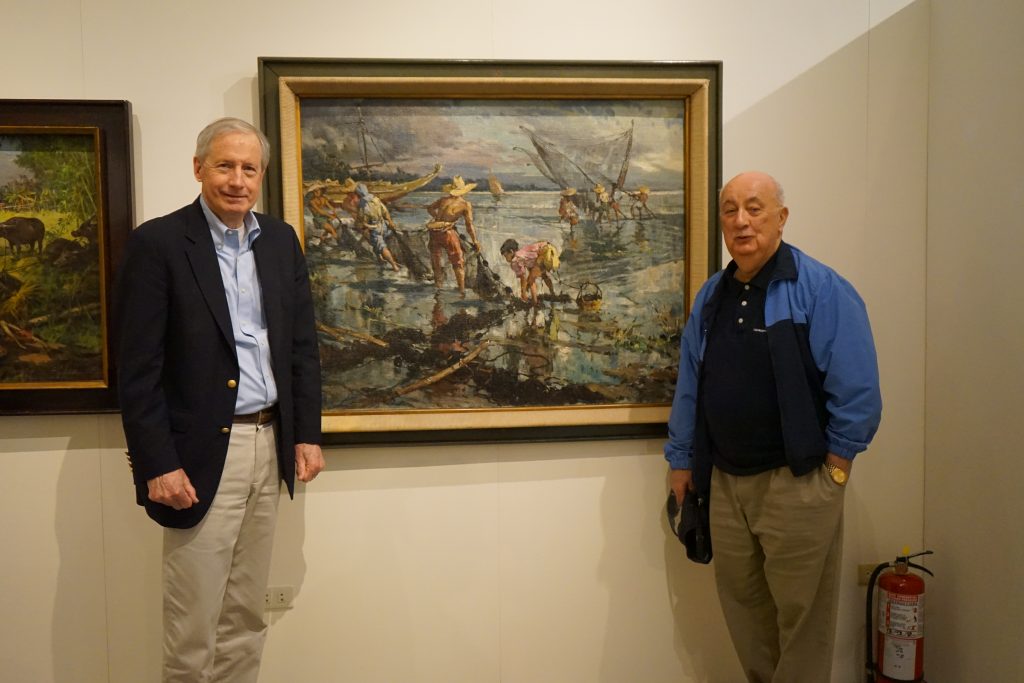
Executive Director Hank Hendrickson and President Ambassador John F. Maisto, Philexcel Art Center, Clark, Philippines, February 19, 2020

